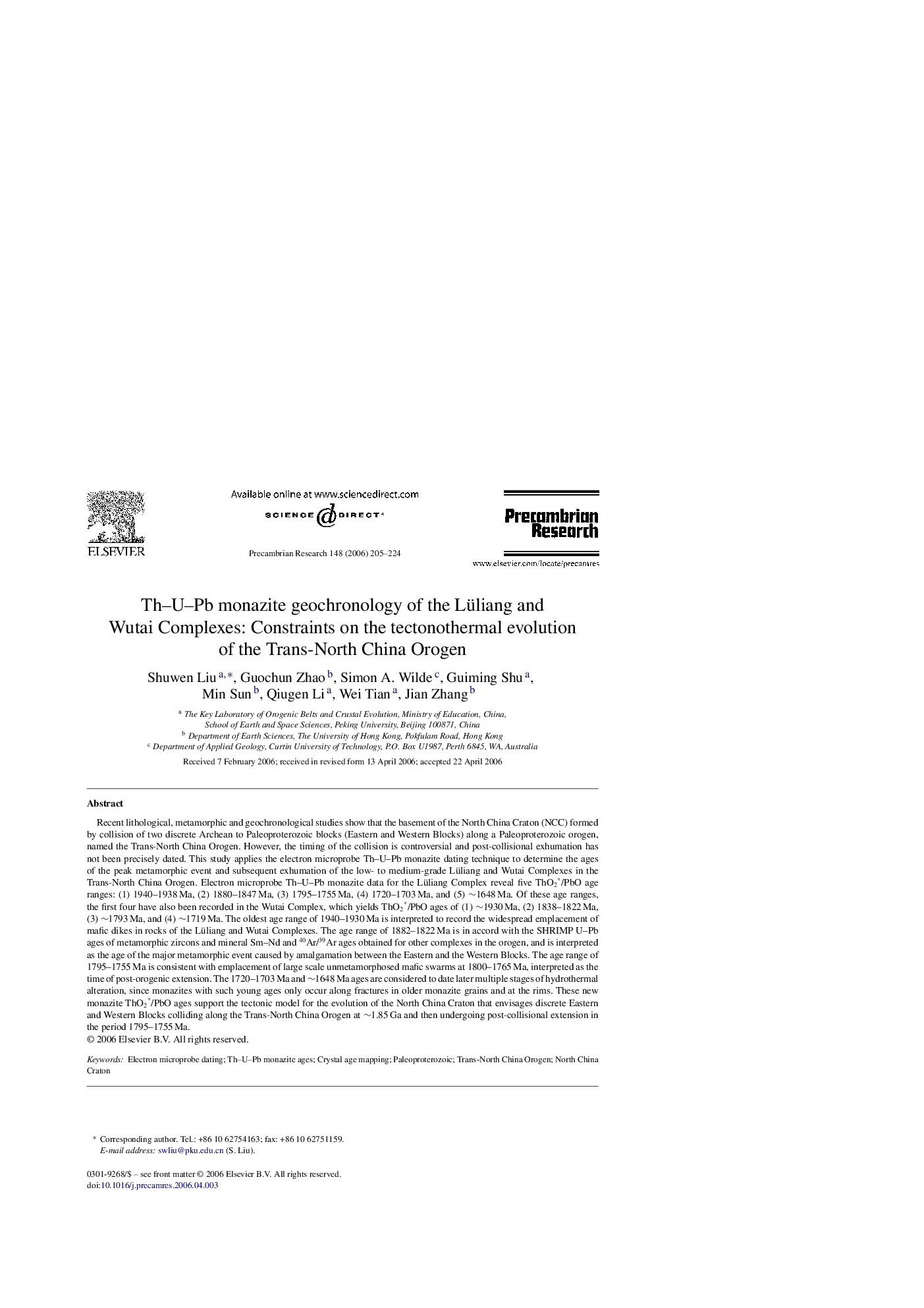| Article ID | Journal | Published Year | Pages | File Type |
|---|---|---|---|---|
| 4724702 | Precambrian Research | 2006 | 20 Pages |
Recent lithological, metamorphic and geochronological studies show that the basement of the North China Craton (NCC) formed by collision of two discrete Archean to Paleoproterozoic blocks (Eastern and Western Blocks) along a Paleoproterozoic orogen, named the Trans-North China Orogen. However, the timing of the collision is controversial and post-collisional exhumation has not been precisely dated. This study applies the electron microprobe Th–U–Pb monazite dating technique to determine the ages of the peak metamorphic event and subsequent exhumation of the low- to medium-grade Lüliang and Wutai Complexes in the Trans-North China Orogen. Electron microprobe Th–U–Pb monazite data for the Lüliang Complex reveal five ThO2*/PbO age ranges: (1) 1940–1938 Ma, (2) 1880–1847 Ma, (3) 1795–1755 Ma, (4) 1720–1703 Ma, and (5) ∼1648 Ma. Of these age ranges, the first four have also been recorded in the Wutai Complex, which yields ThO2*/PbO ages of (1) ∼1930 Ma, (2) 1838–1822 Ma, (3) ∼1793 Ma, and (4) ∼1719 Ma. The oldest age range of 1940–1930 Ma is interpreted to record the widespread emplacement of mafic dikes in rocks of the Lüliang and Wutai Complexes. The age range of 1882–1822 Ma is in accord with the SHRIMP U–Pb ages of metamorphic zircons and mineral Sm–Nd and 40Ar/39Ar ages obtained for other complexes in the orogen, and is interpreted as the age of the major metamorphic event caused by amalgamation between the Eastern and the Western Blocks. The age range of 1795–1755 Ma is consistent with emplacement of large scale unmetamorphosed mafic swarms at 1800–1765 Ma, interpreted as the time of post-orogenic extension. The 1720–1703 Ma and ∼1648 Ma ages are considered to date later multiple stages of hydrothermal alteration, since monazites with such young ages only occur along fractures in older monazite grains and at the rims. These new monazite ThO2*/PbO ages support the tectonic model for the evolution of the North China Craton that envisages discrete Eastern and Western Blocks colliding along the Trans-North China Orogen at ∼1.85 Ga and then undergoing post-collisional extension in the period 1795–1755 Ma.
